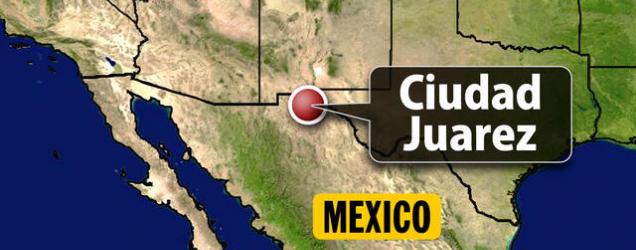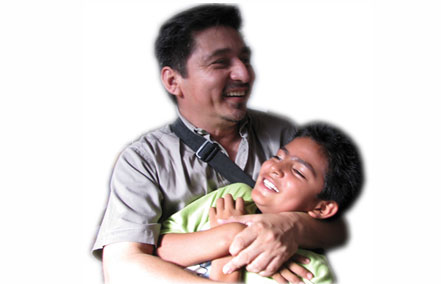Violent crime by young gang offenders in Central America is highly exposed in local media and weighs heavily on the administration of justice. While getting tough on crime is politically appealing, grappling with reality is far more complex. Juvenile Justice Magistrate Doris Luz Rivas Galindo of El Salvador underscores the point: “I sent a juvenile offender to a juvenile detention center with no tattoos and when he left the center he was completely tattooed and without any aspirations in life. I felt like an accomplice.”
USAID’s Regional Youth Alliance Project is empowering governments and civil society to reduce the numbers of youth who join gangs or break the law by improving Juvenile Justice and applying restorative justice solutions. The long term strategy is to reverse the trend of economic stagnation. The prevalence of delinquent youth discourages legitimate businesses, perpetuating unemployment that fuels gang recruitment and crime. The Alliance works in close collaboration with the Central American Integration System (SICA), an intergovernmental organization of regional states.
The concept of restorative justice is rooted in international law. The United Nations Vienna Declaration on Crime and Justice (2000) encouraged the “development of restorative justice policies, procedures and programs that are respectful of the rights, needs and interests of victims, offenders, communities and all other parties.”
According to the United Nations, “Restorative justice refers to a process for resolving crime by focusing on redressing the harm done to the victims, holding offenders accountable for their actions and, often also, engaging the community in the resolution of that conflict.” Under this approach,“…the victim and the offender, and, where appropriate, any other individuals or community members affected by a crime, participate together actively in the resolution of matters arising from the crime, generally with the help of a facilitator.”
In El Salvador, there is a strong social perception that juvenile delinquency needs to be dealt with harshly. El Salvador’s current heated debate about raising sentencing limits for children 17-years and younger from 7 to 15 years is a case in point. Salvador Stadthagen, project director of the Regional Youth Alliance Project in El Salvador, Guatemala and Honduras, points out that approximately 6-8% of violent crimes are actually committed by juveniles. A February 1, 2010 report by the Juvenile Justice Unit of El Salvador’s Supreme Court substantiates the point, recording only 661 juveniles currently detained. Many more received alternate measures that get little follow-up.
The call for restorative justice is driven by the need to comply with international standards with respect to the rights of the child and to respond to rising crime rates in Central America. Faced with the choice of sending a child back into a life of crime, Judicial practitioners such as Justice Galindo are seeking out the restorative justice approaches being advanced by the Alliance. In 2008 and again in 2009, the Alliance organized successive Regional Juvenile Justice Forums in Tegucigalpa and San Salvador. Attended by judges, international juvenile justice experts, SICA and U.N. representatives, the gatherings provided restorative justice recommendations to the governments of El Salvador, Guatemala and Honduras.
“Youth are more malleable and likely to benefit from a system that promotes restorative justice over traditional justice,” said Stadthagen. “Also, unlike traditional justice that focuses on the criminal, restorative justice also focuses on the victims, opening the way for reconciliation and reparations.”
Influenced by the Alliance’s work, policies and practices involving alternative restorative justice measures are evolving. Unfortunately, governments lack resources to invest in these initiatives. The 2008 budget of 3.4 million dollars for the Salvadoran Institute for Integral Development of Children and Adolescents represents less than one half of one percent of the national budget. Likewise in Guatemala and Honduras, laws provide alternative measures to assist children in trouble with the law, “but assigned officers cannot follow-up with kids, especially those outside of urban areas to make sure they are attending school, literacy classes, and so on, because they do not have funding,” said Stadthagen.
Rehabilitation and juvenile detention centers in the three countries are often overwhelmed. “In El Salvador, there have been 20 assassinations carried out at rehab centers which are dominated by gangs,” said Stadthagen.
“The juvenile justice track is second class. Kids get the larger share of the blame.” In response to this counterproductive approach, the Alliance is encouraging Juvenile Justice systems to offer measures such as supervision, counseling, education and vocational training programs and other alternatives to institutional care for children.
“Our next step is to pursue advocacy and to deepen the qualitative and quantitative analysis of the circumstances governing juvenile justice. We’d like to bring in an academic component to help the process move forward,” said Stadthagen. “We are also considering a pilot program in Guatemala. There, kids in detention centers must visit a judge every three months, for those in rural areas they must travel sometimes more than 400 miles to see the judge because there is one juvenile justice judge in the entire country appointed to serve these kids. We are thinking of a virtual courtroom so that kids wouldn’t have to travel so far.”
As the SICA-led Alliance supports governments in meeting their commitments to improve juvenile justice standards in the region, there’s a glimmer of hope for juvenile offenders and their victims to find reconciliation and a new beginning in life. USAID’S Regional Youth Alliance Project is implemented by Creative Associates International, Inc. of Washington, D.C.
—Alexandra Pratt

